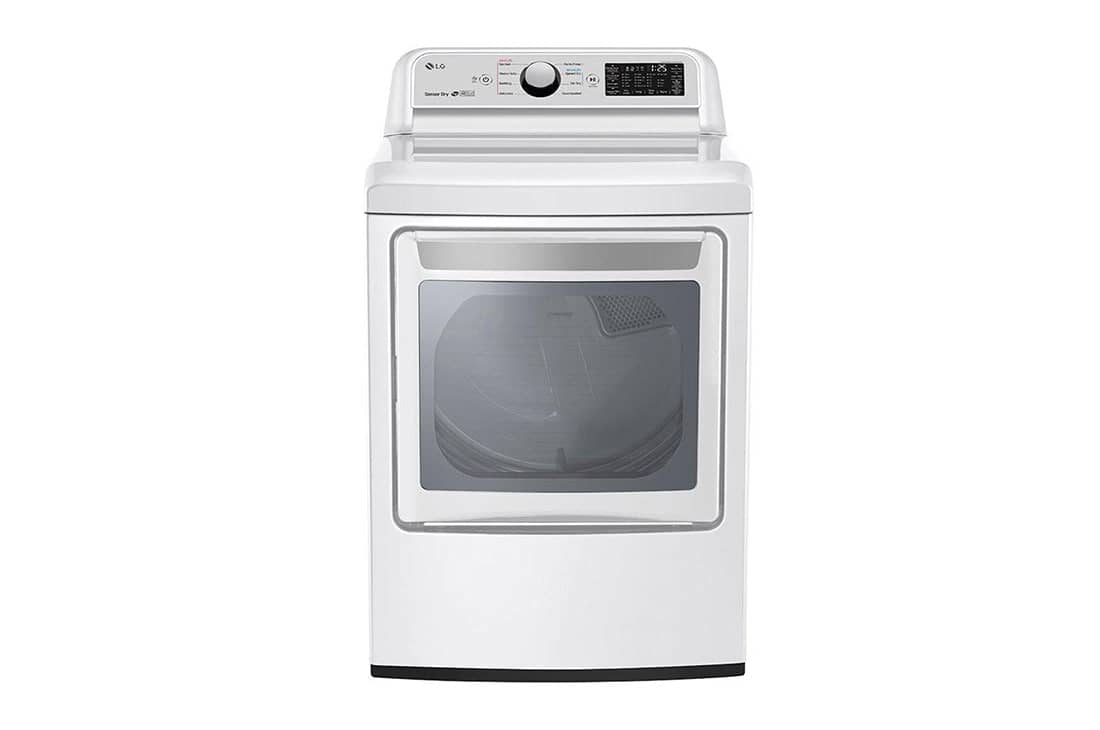A malfunctioning dryer can disrupt daily routines and leave clothes damp and unwearable. When a dryer fails to heat up, it often stems from common issues like power problems, faulty heating elements, or thermostat malfunctions. These issues can range from simple fixes to more complex repairs requiring professional assistance.
Understanding the potential causes of a non-heating dryer empowers homeowners to troubleshoot effectively. From checking circuit breakers to inspecting gas supply lines, various steps can help identify the root of the problem. While some repairs may be manageable for DIY enthusiasts, others might necessitate the expertise of a qualified technician to ensure safe and proper resolution.
Troubleshooting a Dryer That Spins But Doesn’t Heat
Common Causes of a Dryer Not Heating
A dryer that spins but doesn’t heat is a common problem. Several things can cause this, and most are easy to check. Here are some of the most common causes:
- Thermal Fuse: This is a safety device that shuts off the dryer if it gets too hot. If it blows, the dryer won’t heat.
- Heating Element: This part is responsible for generating heat. If it burns out, the dryer won’t heat.
- Gas Supply (for Gas Dryers): If you have a gas dryer, a problem with the gas supply can prevent it from heating.
- Igniter (for Gas Dryers): The igniter lights the gas. If it’s faulty, the dryer won’t heat.
- Moisture Sensor: While less common, a faulty moisture sensor can sometimes interfere with the heating cycle.
- Ventilation Issues: Blocked vents can restrict airflow, which can affect the dryer’s ability to heat efficiently.
Troubleshooting Steps
Here are steps you can take to diagnose the problem:
- Check the Power: Make sure the dryer is plugged in and the circuit breaker hasn’t tripped.
- Check the Lint Filter: A clogged lint filter restricts airflow and can cause overheating, which can trip the thermal fuse. Clean it before each load.
- Check the Vent: Make sure the vent is not blocked by lint or other debris. A blocked vent can cause overheating and reduce drying efficiency. Check the vent both inside and outside your home.
- Check the Gas Supply (Gas Dryers): Make sure the gas valve is open. Check other gas appliances in your home to see if they are working. If not, there may be a problem with your gas supply.
- Test the Thermal Fuse: You’ll need a multimeter for this. If the fuse has continuity, it’s good. If not, it needs replacing. This is usually located on the blower housing.
- Test the Heating Element (Electric Dryers): You’ll need a multimeter for this, too. If the element doesn’t have continuity, it needs to be replaced.
- Check the Igniter (Gas Dryers): If the igniter isn’t glowing orange when the dryer starts, it’s likely faulty and needs replacing.
| Problem | Possible Causes | Troubleshooting Steps |
|---|---|---|
| Dryer Spins, But No Heat (Electric) | Thermal fuse, heating element, ventilation issues | Check power, clean lint filter, check vent, test thermal fuse, test heating element |
| Dryer Spins, But No Heat (Gas) | Gas supply, igniter, thermal fuse, ventilation issues | Check power, clean lint filter, check vent, check gas supply, check igniter, test thermal fuse |
When to Call a Professional
If you’ve checked all these things and your dryer still isn’t heating, it’s time to call a qualified appliance repair technician. They have the tools and expertise to diagnose and fix more complex problems. Working with gas appliances can be dangerous, so it’s always best to call a professional if you’re not comfortable working with gas lines.
Preventing Dryer Problems Through Regular Maintenance
Regular maintenance can prevent many dryer problems. Cleaning the lint filter after each load is essential for preventing fires and improving drying efficiency. Cleaning the vent at least once a year is also important. This helps prevent blockages that can cause overheating and reduce drying performance. Inspecting the vent for damage or kinks is also a good idea. These simple steps can extend the life of your dryer and prevent costly repairs.
Key Takeaways
- Dryer heating issues often stem from electrical, mechanical, or ventilation problems
- Proper diagnosis involves checking power sources, components, and airflow
- Professional repair services may be necessary for complex or safety-related issues
Why Your Dryer Isn’t Producing Heat
Understanding the signs of potential problems with your dryer, such as longer drying times or unusual noises, can help you avoid larger issues and costly repairs. Addressing small problems promptly ensures your dryer runs efficiently for years.
Problem #1: Electrical Supply Issues
A dryer may fail to heat due to circuit breaker problems. If only one hot contact is properly connected, the dryer receives insufficient voltage. This results in the machine running without generating heat.
To check:
- Locate the circuit breaker panel
- Ensure both breaker switches for the dryer are in the “On” position
- If one switch is tripped, reset it
Problem #2: Faulty Heating Components
The heating element is crucial for dryer function. When damaged or poorly connected, it prevents heat generation.
For electric dryers:
- Check resistance of the heating element
- Inspect for visible damage or wear
For gas dryers:
- Examine the igniter for proper operation
- Test igniter resistance with a multimeter
Problem #3: Restricted Airflow
Blocked vents can cause overheating and shut down the thermostat. To resolve:
- Clean the lint screen thoroughly
- Vacuum the lint trap area
- Remove and clean the vent hose
- Check for external vent blockages
Problem #4: Thermostat Malfunction
The cycling thermostat regulates dryer temperature. If faulty, it may incorrectly shut off the heating element. To troubleshoot:
- Locate the thermostat
- Test for continuity using a multimeter
- Replace if no continuity is detected
Problem #5: Control Board Failure
The main control board manages all dryer functions. Signs of failure include:
- Visible charring on the board
- Inconsistent cycle operation
- Complete loss of heat
If the control board is faulty, replacement is typically necessary. This job often requires professional assistance due to its complexity.
Dryer Not Heating: Troubleshooting Steps
Clean the Dryer’s Interior
A clogged lint screen can cause heating issues. Unplug the appliance and remove the cover panel. Use tweezers to clear dust from the filter at the back. This improves air circulation and heating efficiency.
- Unplug the dryer
- Remove cover panel
- Clean filter with tweezers
- Reconnect power and test
Allow Complete Cool Down
Overheating triggers automatic shutoff in many dryers. Turn off the appliance and let it cool fully before restarting. This simple step often restores proper heating function.
Examine the Power Outlet
Faulty outlets can cause dryer malfunctions. Reset the outlet or circuit breaker if possible. If problems persist, consult an electrician to check the electrical system.
Inspect the Heating Element
For electric dryers, heating element issues are common. Follow these steps:
- Unplug the dryer
- Remove back cover
- Locate the heating element
- Check for visible damage or burn marks
- Use a multimeter to test for continuity
A damaged heating element may need replacement. Consider professional help for this task.
Regular dryer vent cleaning prevents many heating problems. Remove lint from the trap after each use. Clean the entire vent system yearly to maintain optimal performance.
For gas dryers, ensure the gas shutoff valve is open. The handle should be parallel to the pipe.
These steps address common causes of dryer heating issues. If problems continue, seek professional repair services to avoid safety risks and further damage.
Dryer Heat Issues: Common Causes and Fixes
Safety Device Malfunction: Thermal Fuse
The thermal fuse prevents dryer overheating. It sits on the blower housing. Lint buildup often leads to overheating.
Fix steps:
- Clean the lint screen
- Check for vent hose kinks
- Clear exhaust ducts
If issues persist, a technician should replace the fuse.
Gas Flow Problems: Valve Solenoids
Gas dryers use solenoid coils to control gas flow. Faulty coils can block gas, preventing heating.
A certified gas expert should replace defective valve coils.
Ignition Failure: Faulty Igniter
The igniter heats up to light gas in dryers. A broken igniter won’t start the heating process.
Only a certified technician should replace this delicate part.
Electric Heating Issues: Faulty Element
Electric dryers use a coiled wire to heat air. A broken element won’t produce heat.
Test the element for continuity. A pro should replace it if needed.
Complete Heating System Failure: Element Assembly
This unit includes the heating coil and housing. It may need full replacement if the element fails.
A repair expert should handle assembly replacement.
Flame Detection Problems: Sensor Malfunction
Gas dryers use sensors to control gas flow based on flame presence. Bad sensors can prevent heating.
Signs of failure:
- Igniter won’t glow
- Gas valve won’t open
A gas expert should test and replace faulty sensors.
Power Supply Issues: Insufficient Voltage
Electric dryers need 240 volts to heat properly. Low voltage can cause no-heat problems.
Check your circuit breaker. An electrician should fix power supply issues.
Overheating Protection: High-Limit Thermostat
This device shuts off heat if the dryer gets too hot. It can malfunction and cut heat unnecessarily.
A technician should test and replace a faulty high-limit thermostat.
Temperature Regulation: Cycling Thermostat
This part controls drum temperature by cycling heat on and off. It can wear out over time.
A pro should test the cycling thermostat and replace if needed.
Central Control Issues: Main Board Failure
The main control board runs all dryer functions. Burnt spots may indicate a problem causing no heat.
A technician should check other parts before replacing the main board.
Timing Mechanism Problems: Faulty Timer
The timer controls heat cycles. Its contacts can wear out, stopping heat production.
A repair expert should check other parts first, then replace the timer if needed.







